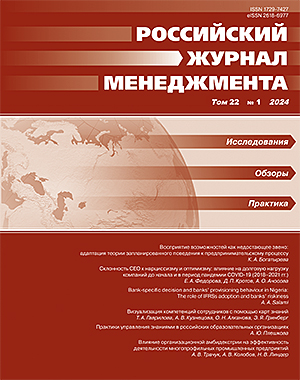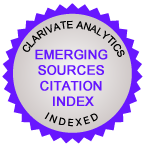CEO’s tendency to narcissism and optimism: The impact on a company’s debt burden before and during the COVID-19 pandemic
DOI:
https://doi.org/10.21638/spbu18.2024.102Abstract
Goal: to assess the impact of the level of the CEO’s optimism and narcissism on the capital structure of companies in the developed and emerging markets before and during the COVID-19 pandemic.
Metodology: the study is based on 100 Western companies from the “Forbes Global 2000” list and 50 leading Russian companies in terms of revenue and capitalization. The assessment of narcissism and optimism was carried out by application of text analysis based on the bag of words and the pronoun counting method. Using the Anglin dictionary, four manifestations of narcissism were assessed — superiority (manifestation of superiority), vanity (vanity), exhibitionism (narcissism), self-sufficiency (arrogance). The hypotheses about the relationship between a CEO’s personality characteristics (narcissism and optimism) and the company’s capital structure were tested by using panel regression with fixed effects.
Findings: the study revealed that the influence of the behavioral characteristics of a CEO increased during the crisis period (pandemic), which may indicate the tendency of managers to act less rationally and more impulsively; the result was confirmed for both domestic and foreign managers. The interplay between narcissism and optimism has a similar trend with the level of debt burden in Russian and international companies, i.e. for decision-making, the personal characteristics of management are more important than regional business specifics.
Originality and contribution of the authors: the study contributes to the literature on behavioral finance by assessing the impact of a CEO’s narcissism and optimism in the context of the COVID-19 pandemic and expanding the existing work towards the analysis of crisis situations as well as behavioral finance in different economic and sociocultural areas. The paper proposes text analysis to assess personal characteristics of CEOs.
Keywords:
CEO, narcissism, optimism, corporate governance, capital structure, text analysis, COVID-19 pandemic
Downloads
References
References in Latin Alphabet
Translation of references in Russian into English
Downloads
Published
How to Cite
Issue
Section
License
Articles of the Russian Management Journal are open access distributed under the terms of the License Agreement with Saint Petersburg State University, which permits to the authors unrestricted distribution and self-archiving free of charge.





